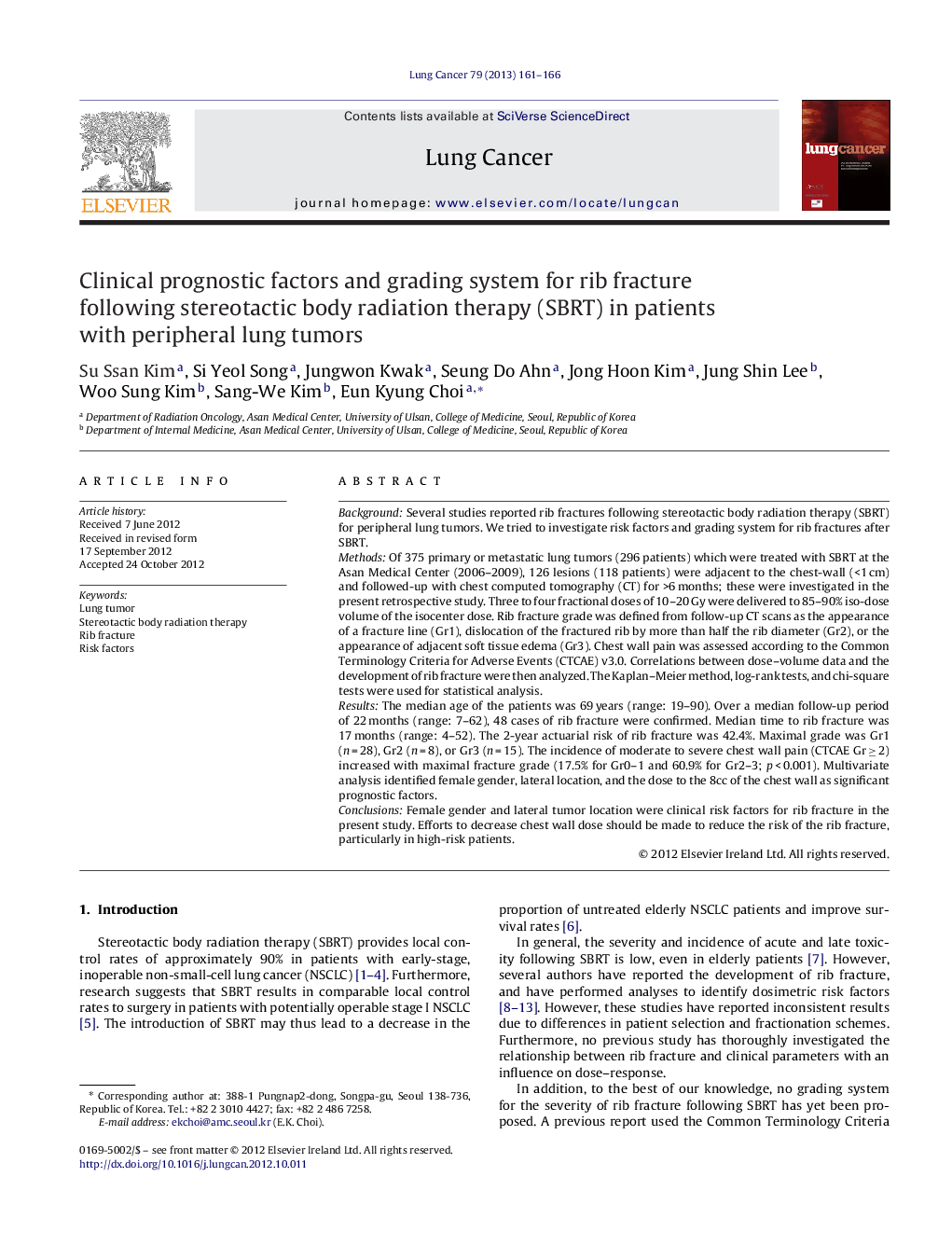| کد مقاله | کد نشریه | سال انتشار | مقاله انگلیسی | نسخه تمام متن |
|---|---|---|---|---|
| 2141339 | 1088284 | 2013 | 6 صفحه PDF | دانلود رایگان |

BackgroundSeveral studies reported rib fractures following stereotactic body radiation therapy (SBRT) for peripheral lung tumors. We tried to investigate risk factors and grading system for rib fractures after SBRT.MethodsOf 375 primary or metastatic lung tumors (296 patients) which were treated with SBRT at the Asan Medical Center (2006–2009), 126 lesions (118 patients) were adjacent to the chest-wall (<1 cm) and followed-up with chest computed tomography (CT) for >6 months; these were investigated in the present retrospective study. Three to four fractional doses of 10–20 Gy were delivered to 85–90% iso-dose volume of the isocenter dose. Rib fracture grade was defined from follow-up CT scans as the appearance of a fracture line (Gr1), dislocation of the fractured rib by more than half the rib diameter (Gr2), or the appearance of adjacent soft tissue edema (Gr3). Chest wall pain was assessed according to the Common Terminology Criteria for Adverse Events (CTCAE) v3.0. Correlations between dose–volume data and the development of rib fracture were then analyzed. The Kaplan–Meier method, log-rank tests, and chi-square tests were used for statistical analysis.ResultsThe median age of the patients was 69 years (range: 19–90). Over a median follow-up period of 22 months (range: 7–62), 48 cases of rib fracture were confirmed. Median time to rib fracture was 17 months (range: 4–52). The 2-year actuarial risk of rib fracture was 42.4%. Maximal grade was Gr1 (n = 28), Gr2 (n = 8), or Gr3 (n = 15). The incidence of moderate to severe chest wall pain (CTCAE Gr ≥ 2) increased with maximal fracture grade (17.5% for Gr0–1 and 60.9% for Gr2–3; p < 0.001). Multivariate analysis identified female gender, lateral location, and the dose to the 8cc of the chest wall as significant prognostic factors.ConclusionsFemale gender and lateral tumor location were clinical risk factors for rib fracture in the present study. Efforts to decrease chest wall dose should be made to reduce the risk of the rib fracture, particularly in high-risk patients.
Journal: Lung Cancer - Volume 79, Issue 2, February 2013, Pages 161–166